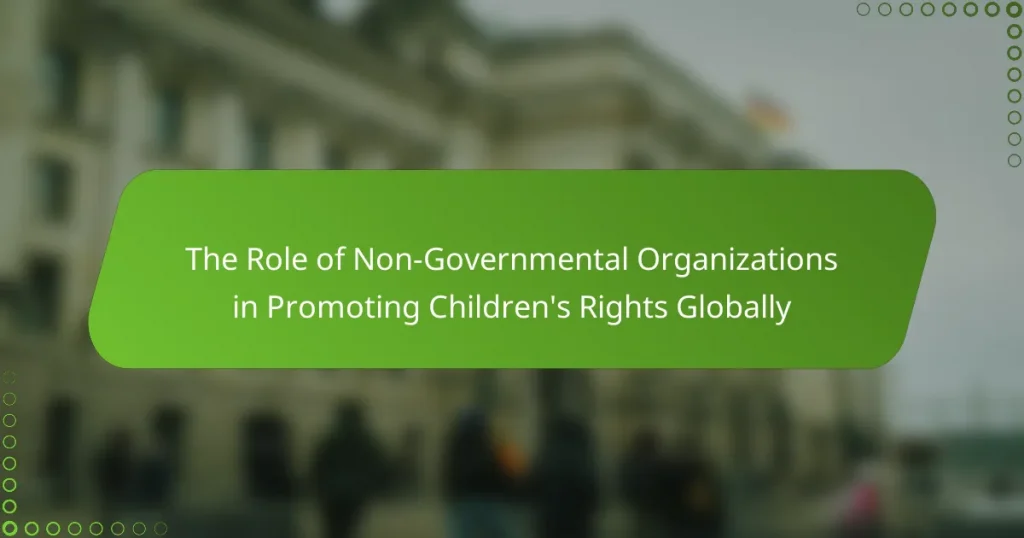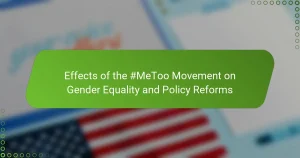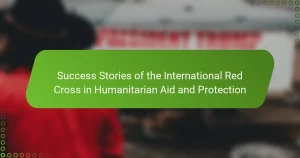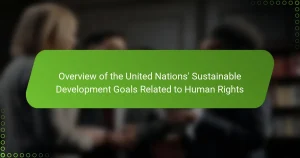Non-governmental organizations (NGOs) are vital entities in the global advocacy for children’s rights, focusing on policy changes, awareness campaigns, and direct services such as healthcare and education. Key organizations like Save the Children, UNICEF, Plan International, and World Vision have made significant contributions by improving child welfare and protection across various regions. However, these NGOs face challenges, including funding limitations, bureaucratic obstacles, political instability, and cultural differences, which can hinder their effectiveness. This article examines the essential role of NGOs in promoting children’s rights while highlighting their achievements and the obstacles they encounter.
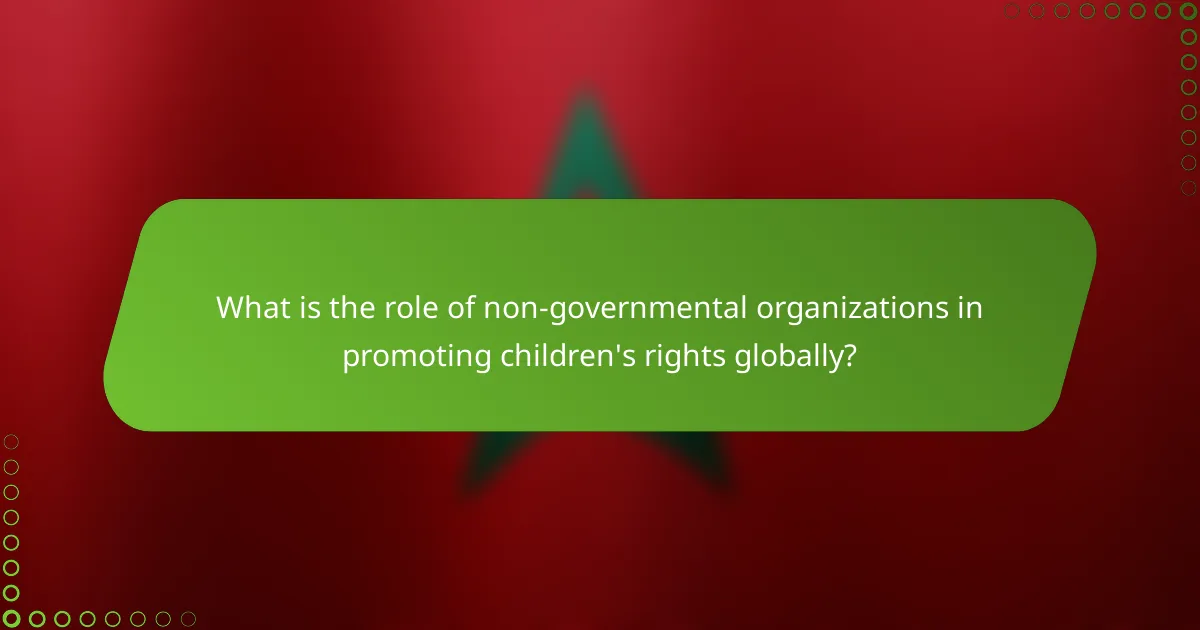
What is the role of non-governmental organizations in promoting children’s rights globally?
Non-governmental organizations (NGOs) play a crucial role in promoting children’s rights globally. They advocate for policy changes to improve children’s welfare and protection. NGOs raise awareness about children’s issues through campaigns and education. They provide direct services such as healthcare, education, and shelter to vulnerable children. Many NGOs work to hold governments accountable for their commitments to children’s rights. They often collaborate with international bodies like the United Nations to influence global standards. For example, organizations like UNICEF focus on child protection and welfare initiatives worldwide. Their efforts contribute to significant improvements in children’s lives and access to rights.
How do non-governmental organizations define children’s rights?
Non-governmental organizations define children’s rights as the fundamental entitlements that all children possess. These rights include the right to survival, development, protection, and participation. NGOs emphasize that children’s rights are inherent and must be upheld regardless of nationality, ethnicity, or background. The United Nations Convention on the Rights of the Child (CRC) serves as a key framework for these definitions. NGOs advocate for these rights to be respected and implemented in local, national, and international contexts. They work to raise awareness and promote policies that protect children’s rights. Evidence of their impact can be seen in various reports highlighting improvements in child welfare and protection measures globally.
What are the key principles of children’s rights advocated by NGOs?
The key principles of children’s rights advocated by NGOs include the right to protection, participation, provision, and non-discrimination. The right to protection ensures children are safeguarded from abuse and exploitation. Participation emphasizes children’s voices in decisions affecting them. Provision focuses on meeting children’s basic needs, such as education and healthcare. Non-discrimination guarantees that all children have equal rights regardless of their background. These principles align with the United Nations Convention on the Rights of the Child, which serves as a foundational framework for NGOs in their advocacy efforts.
How do NGOs interpret the UN Convention on the Rights of the Child?
NGOs interpret the UN Convention on the Rights of the Child as a framework for advocating children’s rights. They emphasize the importance of protecting children from abuse and exploitation. NGOs often focus on the right to education, health care, and participation in decision-making. They view the Convention as a tool to hold governments accountable for children’s welfare. Many NGOs engage in monitoring compliance with the Convention’s provisions. They also provide support and resources to empower children and families. For instance, organizations like Save the Children and UNICEF actively promote awareness of children’s rights globally. Their work illustrates the practical application of the Convention in various contexts.
Why are non-governmental organizations crucial in this field?
Non-governmental organizations (NGOs) are crucial in promoting children’s rights globally because they advocate for policy changes and raise awareness. NGOs act as intermediaries between communities and governments. They provide essential services, such as education and healthcare, where government resources may be lacking. NGOs also conduct research to highlight children’s issues, informing stakeholders of necessary interventions. In 2020, UNICEF reported that NGOs played a significant role in reaching over 50 million children with educational support. Their grassroots connections allow them to understand local needs effectively. NGOs often mobilize resources and volunteers, amplifying their impact in communities.
What unique advantages do NGOs have in promoting children’s rights?
NGOs have unique advantages in promoting children’s rights due to their grassroots connections and advocacy capabilities. They often possess local knowledge and understand community needs better than larger entities. This enables NGOs to tailor their programs effectively. NGOs can mobilize resources quickly and adapt to changing circumstances. They also have the flexibility to innovate and implement new strategies for advocacy. Many NGOs operate independently from government influence, allowing them to challenge injustices more freely. Their ability to raise public awareness through campaigns can lead to significant social change. Additionally, NGOs often collaborate with other organizations to amplify their impact, creating a broader coalition for children’s rights.
How do NGOs complement governmental efforts in protecting children’s rights?
NGOs complement governmental efforts in protecting children’s rights by providing advocacy, resources, and direct services. They often identify gaps in government policies and programs. For instance, NGOs can mobilize communities to raise awareness about children’s rights. They also offer specialized services, such as education and healthcare, which may not be adequately provided by the government. In many regions, NGOs conduct research to inform policy decisions. This research helps in shaping effective laws and regulations. Additionally, NGOs often collaborate with governments to implement child protection programs. Their grassroots connections enable them to reach vulnerable populations effectively. Overall, NGOs play a critical role in enhancing the effectiveness of governmental initiatives for children’s rights.
What are the main activities of NGOs in promoting children’s rights?
NGOs engage in various activities to promote children’s rights. They advocate for policy changes to enhance child protection laws. NGOs also conduct awareness campaigns to educate communities about children’s rights. They provide direct services such as education, healthcare, and nutrition programs for children. Furthermore, NGOs support vulnerable children through shelter and rehabilitation services. They collaborate with governments and other organizations to strengthen child rights initiatives. Research indicates that NGOs play a crucial role in influencing legislation and raising public awareness about children’s issues. For instance, UNICEF reports that NGO advocacy has led to significant improvements in child welfare policies worldwide.
What types of programs do NGOs implement for children’s rights advocacy?
NGOs implement various programs for children’s rights advocacy, including education initiatives, health services, and legal support. Education initiatives aim to increase access to quality schooling for children. Health services often focus on nutrition, vaccination, and mental health support. Legal support programs assist in protecting children from abuse and exploitation. Awareness campaigns are also common, educating communities about children’s rights. Advocacy efforts often involve lobbying for policy changes at local and national levels. Research shows these programs effectively improve children’s well-being and rights protection. For instance, UNICEF reports that educational programs lead to increased enrollment and retention rates in schools.
How do NGOs conduct awareness campaigns around children’s rights?
NGOs conduct awareness campaigns around children’s rights through various strategic methods. They utilize social media platforms to reach a broad audience. Campaigns often include educational materials that inform the public about children’s rights. NGOs collaborate with schools to integrate children’s rights education into curricula. They organize community events to engage local populations directly. Many NGOs produce documentaries or videos to visually convey the importance of children’s rights. They also partner with influential public figures to amplify their message. Research indicates that these methods increase public awareness and advocacy for children’s rights significantly.
How do NGOs collaborate with other stakeholders?
NGOs collaborate with other stakeholders through partnerships, networking, and joint initiatives. They work with government agencies to influence policy and secure funding. NGOs also engage with local communities to understand needs and implement programs effectively. Collaboration with businesses can leverage resources and expertise for social impact. Furthermore, NGOs often align with international organizations for broader reach and advocacy. These collaborations enhance the effectiveness of their efforts in promoting children’s rights globally. For example, UNICEF partners with various NGOs to implement child protection programs in different countries.
What partnerships do NGOs form to enhance their impact?
NGOs form partnerships with various entities to enhance their impact. These partnerships include collaborations with government agencies, other NGOs, and private sector organizations. Collaborating with government agencies allows NGOs to align their initiatives with public policies and gain access to funding. Partnerships with other NGOs facilitate resource sharing and knowledge exchange, enhancing program effectiveness. Collaborating with private sector organizations can provide NGOs with financial support and innovative solutions. These partnerships can lead to increased visibility and advocacy for children’s rights. For example, the partnership between UNICEF and local NGOs has successfully implemented programs improving children’s education and health in multiple countries.
How do NGOs engage with local communities to promote children’s rights?
NGOs engage with local communities to promote children’s rights through education, advocacy, and partnership. They conduct workshops to raise awareness about children’s rights. NGOs also provide training for community leaders on child protection issues. They collaborate with local organizations to implement programs tailored to community needs. Additionally, NGOs facilitate dialogue between families and local authorities to address children’s rights violations. They collect data on children’s conditions to inform policy changes. Many NGOs also mobilize volunteers to support children’s rights initiatives. Evidence shows that community involvement increases the effectiveness of children’s rights programs.
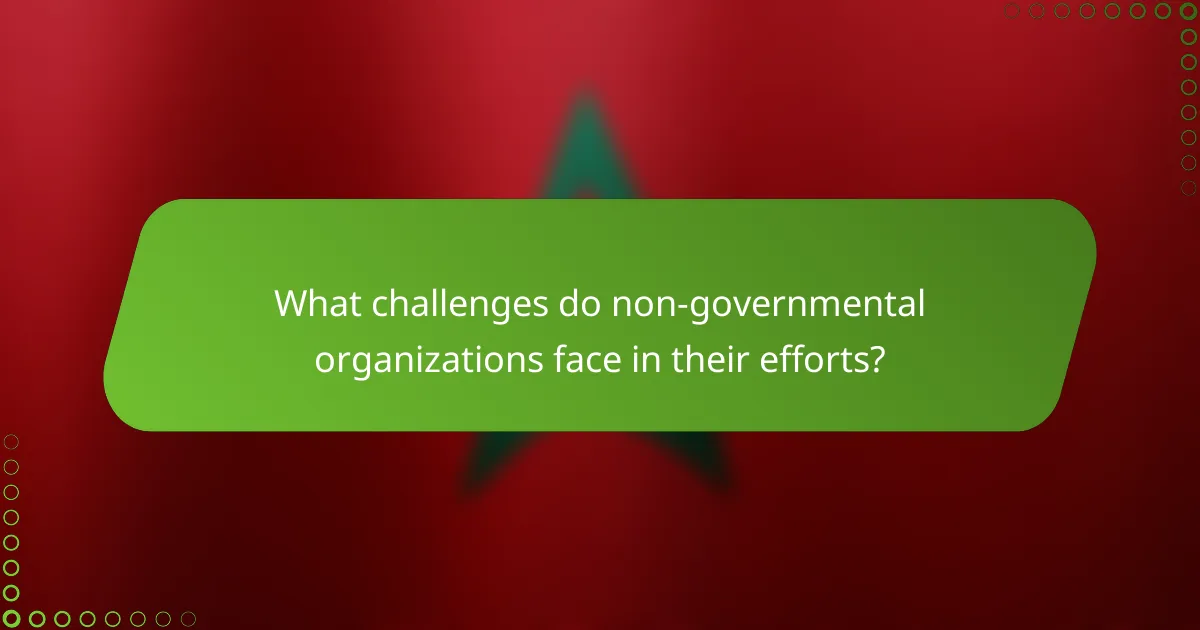
What challenges do non-governmental organizations face in their efforts?
Non-governmental organizations (NGOs) face several challenges in their efforts to promote children’s rights globally. Funding limitations hinder their ability to sustain projects. According to a 2021 report by the Global Fund for Children, 60% of NGOs reported funding shortages. Bureaucratic obstacles complicate collaboration with governments and other organizations. These challenges can delay project implementation and reduce effectiveness. Additionally, political instability in certain regions affects the operational environment for NGOs. Security concerns may restrict access to vulnerable populations. Lastly, cultural differences can create misunderstandings and resistance to initiatives aimed at promoting children’s rights. These challenges collectively impact the effectiveness of NGOs in their mission.
What obstacles hinder NGOs in promoting children’s rights?
NGOs face several obstacles in promoting children’s rights. Limited funding restricts their ability to implement programs effectively. Political instability in regions can hinder their outreach and operations. Legal barriers often prevent NGOs from operating freely. Cultural resistance may lead to community pushback against children’s rights initiatives. Lack of awareness about children’s rights among the public complicates advocacy efforts. Coordination challenges with other organizations can dilute impact. Additionally, inadequate data on children’s issues makes it difficult to address specific needs. These obstacles collectively impede the effectiveness of NGOs in their mission to promote children’s rights.
How do funding limitations affect NGOs’ capabilities?
Funding limitations significantly restrict NGOs’ capabilities. Limited financial resources hinder their ability to implement projects effectively. NGOs often struggle to maintain staff and retain skilled professionals due to budget constraints. This results in reduced program quality and outreach. Furthermore, funding shortages can lead to the cancellation of essential services. In 2020, a report by the Global Fund for Community Foundations indicated that 70% of NGOs faced operational challenges due to funding cuts. Such limitations ultimately diminish their impact on promoting children’s rights globally.
What political or cultural barriers do NGOs encounter?
NGOs encounter various political and cultural barriers in their operations. Political barriers include restrictive government regulations and lack of support from local authorities. In many countries, NGOs face challenges like bureaucratic hurdles that impede their work. Cultural barriers often stem from local customs and beliefs that may conflict with the NGO’s objectives. For instance, traditional views on child-rearing can hinder initiatives focused on children’s rights. Additionally, NGOs may experience resistance from communities that distrust external organizations. These barriers can significantly affect the effectiveness of NGOs in promoting children’s rights globally.
How do NGOs measure their impact on children’s rights?
NGOs measure their impact on children’s rights through various methods. They use quantitative data collection, such as surveys and statistics, to assess changes in children’s well-being. Qualitative methods, like interviews and focus groups, provide insights into children’s experiences. Monitoring and evaluation frameworks help NGOs track progress against specific goals. Impact assessments analyze the effectiveness of programs and interventions. Case studies illustrate individual success stories and challenges faced by children. Collaboration with local communities enhances the relevance and accuracy of measurements. Reports and publications disseminate findings to stakeholders, ensuring transparency and accountability.
What metrics do NGOs use to evaluate their programs?
NGOs use various metrics to evaluate their programs. Common metrics include impact assessments, which measure the outcomes of interventions. They also utilize performance indicators to track progress against goals. Quantitative data, such as the number of beneficiaries served, is frequently collected. Qualitative feedback from beneficiaries helps assess program effectiveness. Financial metrics, including cost-effectiveness analysis, evaluate resource allocation. Additionally, NGOs often rely on monitoring and evaluation frameworks to ensure accountability. These methods provide a comprehensive view of program success and areas for improvement.
How do NGOs report their findings to stakeholders?
NGOs report their findings to stakeholders through various methods. They often utilize detailed reports that summarize research and project outcomes. These reports include quantitative data, qualitative insights, and case studies. NGOs may also conduct presentations to share key findings in a more engaging format. Additionally, they often use newsletters and social media to disseminate information widely. Regular updates are provided to keep stakeholders informed about ongoing projects. Transparency is critical, so many NGOs publish their findings on their websites. This practice allows for broader access and accountability.
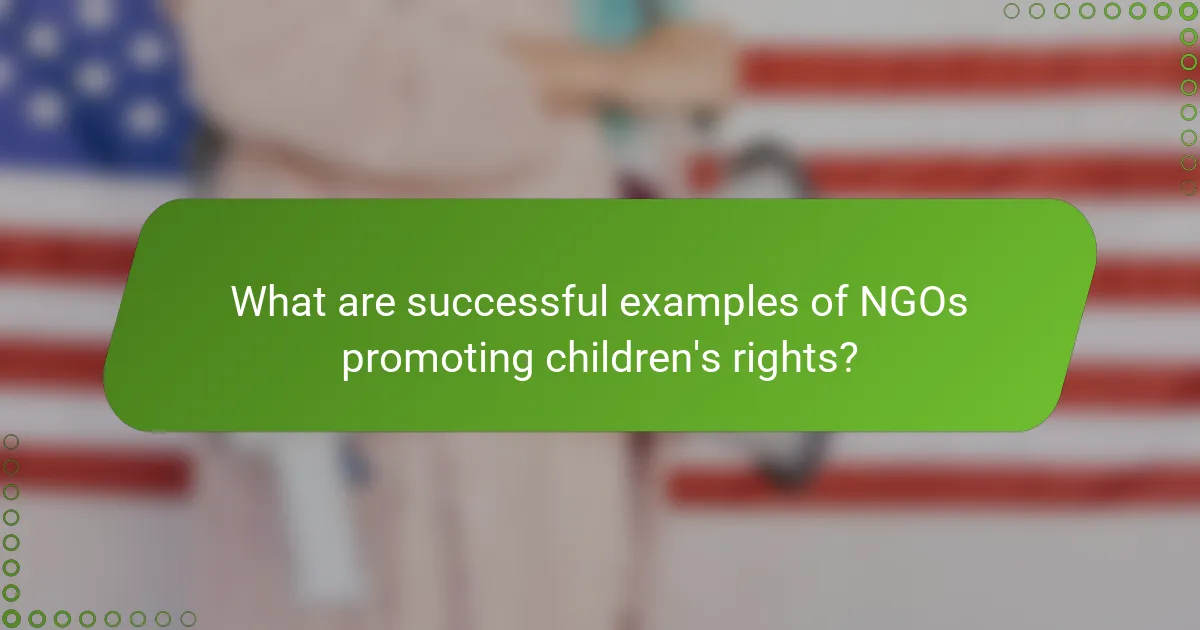
What are successful examples of NGOs promoting children’s rights?
Save the Children is a prominent NGO that has successfully promoted children’s rights globally. Founded in 1919, it operates in over 100 countries. The organization focuses on health, education, and protection for children. UNICEF is another key player in advocating for children’s rights. Established in 1946, it works in more than 150 countries. UNICEF provides emergency relief and supports education initiatives. Plan International has also made significant strides in this area. Founded in 1937, it emphasizes girls’ rights and education. Their programs aim to empower girls and improve their access to education. World Vision is another successful NGO dedicated to children’s welfare. It operates in nearly 100 countries, focusing on community development and child protection. These organizations have made measurable impacts through various programs and initiatives. Their efforts have led to improved child health, education access, and protection from abuse.
What case studies illustrate effective NGO interventions?
Case studies illustrating effective NGO interventions include the work of Save the Children in Ethiopia. They implemented a nutrition program that reduced child malnutrition rates by 25% in targeted areas. Another example is UNICEF’s education initiatives in Afghanistan. These programs increased school enrollment rates for girls by over 30% in rural regions. Additionally, the International Rescue Committee’s efforts in Syria provided essential medical services to over 1 million displaced individuals. These interventions demonstrate the significant impact NGOs can have on children’s rights and well-being globally.
How did specific NGOs achieve significant changes in children’s rights?
Specific NGOs achieved significant changes in children’s rights through advocacy, policy reform, and grassroots mobilization. Organizations like UNICEF and Save the Children have lobbied for stronger legal protections for children. They have influenced international treaties such as the Convention on the Rights of the Child. These NGOs conduct research to highlight issues affecting children’s rights. They also raise public awareness through campaigns and education. Collaborating with local communities, they empower families to advocate for their children. Additionally, they provide direct support services, improving access to education and healthcare. Their efforts have led to measurable improvements in child welfare and protection globally.
What lessons can be learned from these successful initiatives?
Successful initiatives by non-governmental organizations (NGOs) in promoting children’s rights reveal several key lessons. First, collaboration with local communities enhances the effectiveness of programs. Engaging community members fosters trust and ensures that initiatives address specific needs. Second, data-driven approaches lead to measurable outcomes. For instance, NGOs that utilize research and statistics can better tailor their interventions. Third, advocacy and awareness campaigns are crucial. These efforts educate the public and influence policy changes. Additionally, sustainable funding models are essential for long-term impact. Programs that secure diverse funding sources tend to be more resilient. Lastly, adaptability is vital. Successful initiatives often pivot based on feedback and changing circumstances, ensuring continued relevance and effectiveness.
What best practices can NGOs adopt to enhance their effectiveness?
NGOs can enhance their effectiveness by implementing a clear strategic plan. A strategic plan provides direction and measurable objectives. Regular evaluation of programs ensures alignment with goals. Engaging stakeholders fosters collaboration and resource sharing. Utilizing data-driven decision-making improves program outcomes. Training staff enhances skills and capacity. Building strong community relationships increases trust and support. Adopting transparency practices boosts credibility and accountability. These practices lead to more impactful interventions for children’s rights globally.
How can NGOs improve community engagement in their programs?
NGOs can improve community engagement in their programs by actively involving local stakeholders in decision-making processes. This approach fosters a sense of ownership among community members. Engaging with community leaders can build trust and facilitate better communication. NGOs should also conduct regular assessments to understand community needs and preferences. Tailoring programs to address specific local issues enhances relevance and participation. Providing training and resources empowers community members to take part in program implementation. Collaboration with local organizations can amplify outreach and effectiveness. Research shows that programs with high community engagement have better outcomes, as evidenced by the World Bank’s findings on participatory approaches.
What strategies can NGOs implement to secure sustainable funding?
NGOs can implement diverse strategies to secure sustainable funding. Building strong relationships with donors is essential. This includes regular communication and transparency about project outcomes. Diversifying funding sources helps reduce dependency on a single donor. NGOs should explore government grants, private foundations, and corporate sponsorships. Developing a comprehensive fundraising plan can guide these efforts. Engaging in social enterprise activities can generate additional revenue streams. Demonstrating impact through data and success stories attracts more support. Collaborating with other organizations can leverage shared resources and networks.
Non-governmental organizations (NGOs) play a vital role in promoting children’s rights globally by advocating for policy changes, raising awareness, and providing essential services such as healthcare and education. They define children’s rights as fundamental entitlements, emphasizing protection, participation, provision, and non-discrimination, guided by the UN Convention on the Rights of the Child. NGOs face challenges including funding limitations and political barriers, yet they effectively engage local communities and collaborate with various stakeholders to enhance their impact. Successful examples of NGO interventions demonstrate measurable improvements in child welfare and highlight best practices for effective advocacy and community engagement.
